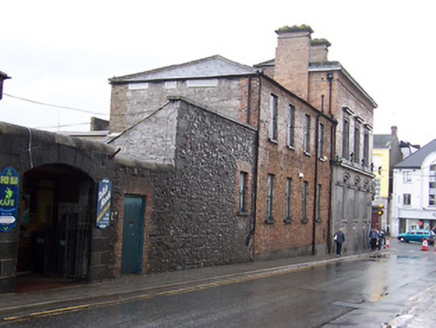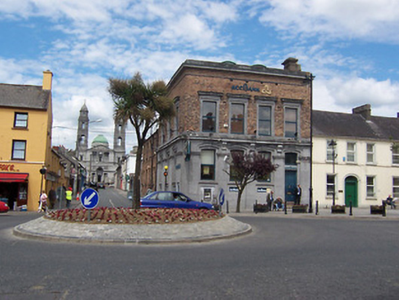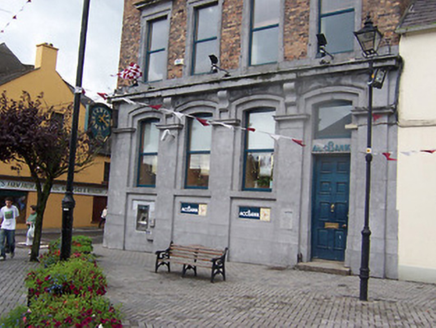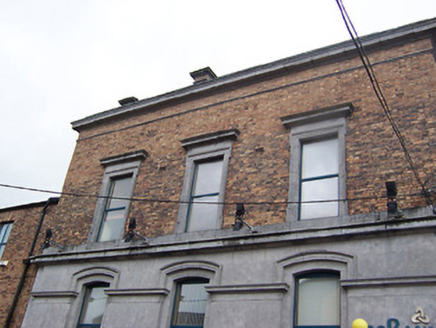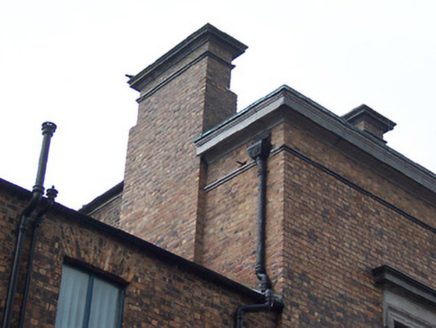Survey Data
Reg No
15310209
Rating
Regional
Categories of Special Interest
Architectural, Artistic, Social
Previous Name
Bank of Ireland
Original Use
Bank/financial institution
In Use As
Bank/financial institution
Date
1870 - 1880
Coordinates
243530, 252983
Date Recorded
01/07/2004
Date Updated
--/--/--
Description
Attached corner-sited four-bay two-storey bank, built c.1874, having a three-bay two-storey elevation to Mary Street (west) elevation. Roof hidden behind a raised parapet with a moulded ashlar limestone eaves cornice having an ashlar limestone blocking course over. red brick chimneystack to the east side of the main elevation having moulded cut limestone trim. Ashlar limestone construction to the ground floor with extensive cut limestone trim, including a bracketed cornice to the main (south) elevation and a moulded string course at window arch springing point. red brick construction over to the first floor. Segmental-headed window openings to the ground floor, set in segmental-headed recesses, with replacement windows. Square-headed window openings over to the first floor having cut limestone shouldered architraves with entablatures over (aedicules) and having replacement windows. Segmental-headed doorcase to the east end of the main façade (south) having a replacement door with a plain overlight above. Doorcase to the west end of main façade (south) now infilled with cash machine. Building overlooks The Square to the south with a four-bay two-storey red brick extension and a two-bay two-storey coursed rubble limestone extension to the north on the Mary Street elevation.
Appraisal
A highly appealing and extensively detailed two-storey Italianate Palazzo-style Victorian bank building, which retains its early form and character. This building was designed for the Bank of Ireland by the noted mid-to-late nineteenth-century architect Sandham Symes (1807-1894), architect of choice of the Bank of Ireland from c.1845 until c.1880. It is built in the palazzo-style that is typical of the architectural style favoured by Symes. This building looks earlier than its late nineteenth-century construction date as Symes had been using variations of the same designs for bank buildings for at least two decades. This building occupies an important corner site and has a commanding presence in the streetscape, reflecting the period when bank buildings were designed to express the solidity and wealth of the institution through their architecture. The form of the ground floor suggests that it originally conformed to the usual mid-to-late nineteenth-century formula of doorcases to either end (doorcase to the west end now infilled with a cash machine) of the main building with bank floor lit by central windows. This imposing building is an important addition to the streetscape and forms part of an unusually good and quite varied collection of mid-to-late nineteenth-century bank buildings in Mullingar.
